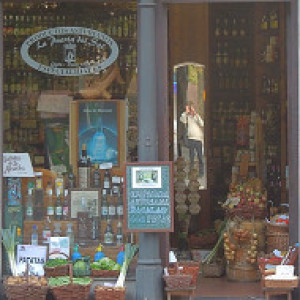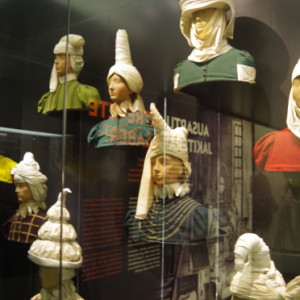Donosita: tapas, txalaparta and tocados
Today we headed for Donostia (San Sebastian). The train station in Zarautz was only five minutes walk from the hotel so we left the car behind and took the half-hour train ride.
After a walk along the seafront and a visit to the tourist office for a street map, we went to explore the old town.
The Basque country, and especially Donositia, are famed for their tapas. Unlike most other areas of Spain, you pay for the tapas, but they are a bit larger and more elaborate and of course you can eat as many as you like as you are paying. For the price of a burger you could but three or four tapas which would be as filling and more interesting. A busy bar might have twenty different tapas on offer. So lunch comprised visits four bars, in each a tapa and a zurrito (small glass of beer). Even though it was late September, there were still quite a few tourists, like ourselves. I imagine that in high summer it would be heaving, so think we chose the right time of year.
After lunch we visited the San Telmo ethnografic museum. Interesting exhibits (see extras photos) included traditional womens' tocado headgear, which apparently could indiciate status in society, maritial status and the district from which the wearer came. They went into disuse a 'several centuries ago when priests discouraged them for the apparently suggestive nature of some of their designs.
There was also a large collection of Basque funerary stelae on display, with an interesting variety of motifs. There is an old necropolis and hermitage called Argiñeta where many more can be seen in-situ, but this will have to wait for our next visit to the Basque country.
Although not quite as cider obsessed as Asturias, the Basque country still has a very strong tradition of cider making. Among the display of agricultural implements there was a photo of two men drumming out the txalaparta. If I understood correctly this was a means of informing neighbours in the surrounding hills that the apples was pressed and inviting them to come for a celebration. The plank used as the drum would have been used in building up the walls of the apple press. Consequently it would have been put on the roof to dry before being used for the txalaparta. Neightbours would keep an eye out for the plank on the roof, knowing that an invite would soon be heard. Here's a video where the two men in the photo explain and demonstrate the txalaparta (in Basque). Nowadays the txalaparta has been turned into a much more elaborate form of percussion music but this video in particular shows the original.




Comments
Sign in or get an account to comment.


